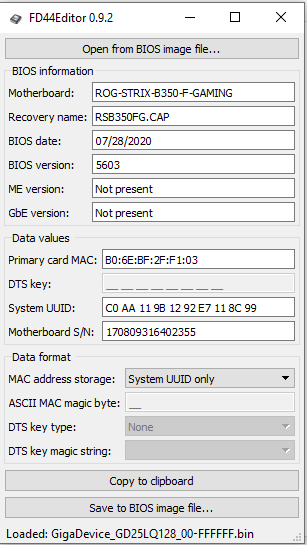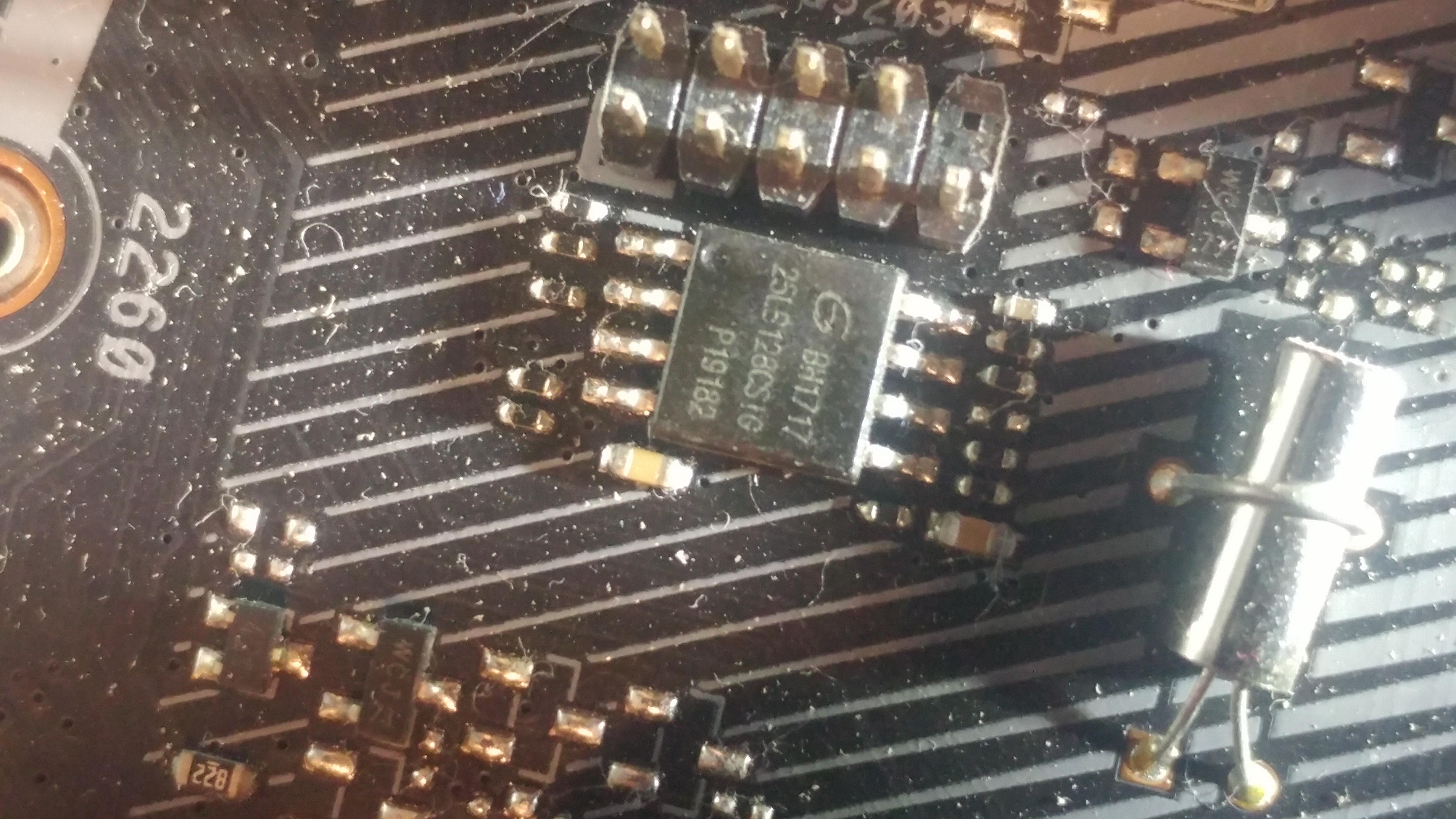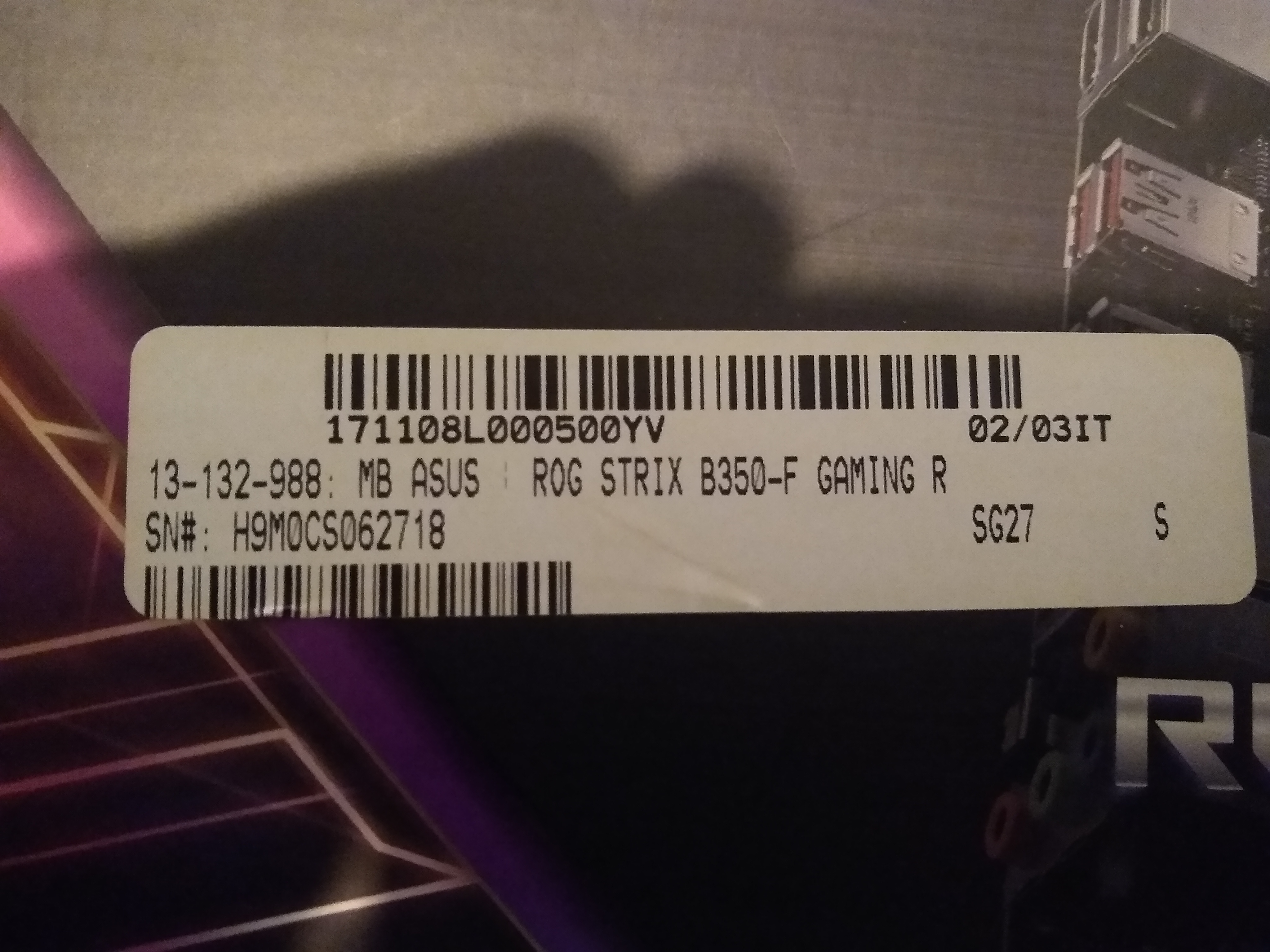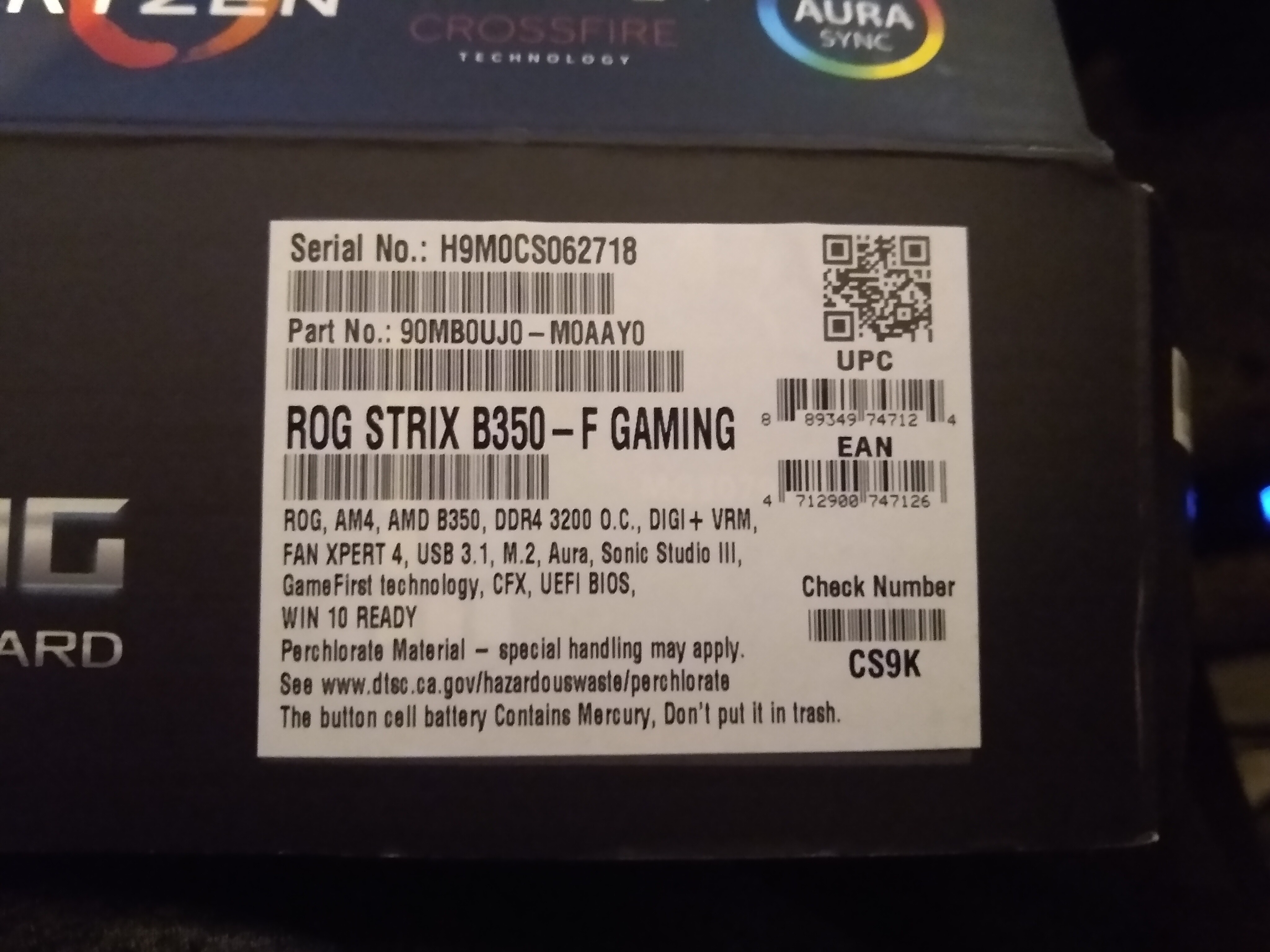[help] Asus b350-f corrupt bios, can read/write SPI, lost UUID/data, can still boot with problems
Boy have I been on a ride with this one. Asus B350-f Gaming with Ryzen 1600x. Using Flashcat USB Pro in 1.8v mode. Chip reads as GigaDevice GD25LQ128, picture attached.
TL/DR:
Regular BIOS update (via EZ flash3 in bios screen) failed
nothing worked – def bricked bios
can read/write bios chip with headers just fine
lost BIOS data (uuid,serial, etc)
flashed 2 newest versions nothing
Flashed next oldest bios (3), it boots! (clean flash straight from ASUS, no data added since I lost it)
But now does weird cycling at bootup, and won’t boot at all with ram in dual channel config (can’t use all the ram slots)
weird
A friend went to update bios via EZ Flasher 3 method in bios, he has updated his bios twice in the past following the same steps. This time it got to 100% and froze, left for 30 min, 1hr, nothing. Rebooted it and it never came up until we touched it with a SPI flasher. No easy Flashback and the board wouldn’t allow us to get into the bios recovery method. In this state after it inintally broke it would boot up, cycle though dram, CPU, lights. VGA light (white) would come up and stay there stuck forever. We did waaay to much testing in this stage including different power supplies, different ram, different graphics card, cmos reset, bios recovery and nothing was working. Gets stuck and hangs on white light indefinitely. I resolved it being a bricked bios and set about how I normally fix them (been a while).
I found the bios chip and went online to buy a replacement to solder in (have an SMD station), I ordered that but while I was waiting for it I noticed the header next to the chip and did some searching and found the pinout and some instructions. I ordered some cables to make a connector that would fit the header, hooked it up to my SPI flasher and I was able to read the chip just fine. I dumped the chip (or so I thought) and tried to flash the newest bios. This is my first dealings with fixing an UEFI BIOS so I ran into a few issues and had to learn about extracting the bios from the .cap file using uefitool. I flash 5603 (the version we were orignally trying to go to) and it wouldn’t boot – same behavior with the vga light. I flashed 5406 (the version we were on prior to this ordeal) same issue stuck on vga. Finally I flashed 5220 after extracting it and it worked! The PC booted, I could get into the bios, but there were still problems. This is where we are now (roughly, I have been messing with adding data to images).
So these are the issues I am seeing now:
There are 4 LEDS: DRAM, CPU, VGA, BOOT.
In a normal boot process CPU will light up for a bit, DRAM will light up for a bit, VGA will, then Boot comes up and I see bios.
After flashing 5220 the computer will turn on CPU, DRAM like normally, VGA will flash for a split second and it will start over, back to CPU. It will cycle like this for a random amount of times. Anywhere from 0-24 cycles until eventually one of those cycles has the vga stay on, then boot comes on and the computer boots. We also found that anytime there are ram sticks in any dual channel slots the computer will cycle forever. But if we put 2 ram sticks together (in wrong sockets so both are single channel) the PC will eventually boot during those post cycles. Such a weird behavior for flashing a bios
I did more and more reading and found out about all the information like UUID, serial, gbe, etc. that need to come over form the old board. I figured that this was why my other flashs weren’t working at all, and possibly why this flash is so janky. I went to find the dump I had taken (I usually dump any chip before I touch it as practice) and it couldn’t find it anywhere. In retrospect I don’t think I actually took the dump and skipped over it. So here we are, I am missing the old info from my old BIOS ( I have MAC and I think I have the serial, trying to find UUID). I am posting here for input from the whole process from people with more experience than me, and also to help me understand what all parts of my old BIOS are needed and in what capacity/role. Also, does it even make sense that not including that data in the 5603,5406 versions would cause it to not boot at all? And if so, is it pretty crazy that 5220 even works at all?
I have opened all the bios files I have and in FD44Editor all of regular lines are empty including GBE and ME show nothing. I did dump the chip a few times after I wrote it to see if it was any different and those ones that I pulled out did have the correct MAC. It had UUID and Serial also but at the moment I’m not sure if they are correct (finding the box). So I am unsure what the impact is for example of having the wrong serial. Or the impact of the GBE and ME sections not showing anything. Given that I have lost my old BIOS data, what steps can I take to try and flash. Remember that replacement bios chip I bought that had been pre-flashed? Well I popped that into my flasher and dumped it – it was blank in all the same places as the bios files I got straight from ASUS which confused me even more.
Right now the machine is booting and gets into windows, but we can’t use all the ram (can’t use dual channel so reduced speed and only 2 slots), and it can take a few minutes just to post while it cycles through those lights.
Attached is an image of what FD44Editor shows on a dump file where I flashed a blank 5603 straight from ASUS (after extracting with uefitool), but then read the dump again. So I’m not sure if this is just default data but I do know that MAC is correct, it’s the one on the sticker on the 24pin connector
Sorry for the wall of text, thank you in advance for any input!



